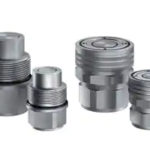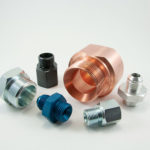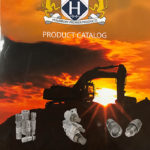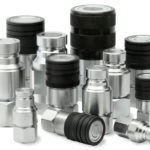By Josh Cosford, Contributing Editor
Hydraulic quick couplings provide users with the ability to rapidly connect and disconnect hydraulic hoses to machines or other sections of plumbing. Also called quick-connects or quick disconnects, these fittings allow fluid to flow when the male and female sides are locked together. Conversely, when disconnected, the quick couplings prevent fluid leakage using check valves to block exiting fluid. The below FAQ should help you understand how to select quick couplers for their common applications.
Q: Are all quick couplers the same?

A: No, there are two primary construction styles for hydraulic quick couplings. The check valve style system uses either balls or poppets to block flow from exiting the fitting. When connected, the balls or poppets push against each other, lifting both off their seats to allow flow through the connection.
Flat face couplers employ a more sophisticated interface that, when joined, will push face sections into each other, opening a large flow path through them both.
Thread-to-connect couplers employ male threads on the nipple portion, and when inserted and tightened into the female coupler, squeeze together to open both check valves. Thread-to-connect couplers offer a very high-pressure rating while offering very little flow in return.
Q: What size should I select for my quick couplings?
A: Quick couplings should be sized based on their flow capacity. It’s a mistake to size couplings relative to the thread size on the hose or fitting to which the coupling attaches. For example, 3/8 in. quick couplings may only flow 4 gpm at 20 psi of backpressure, while the hose itself may flow double that amount.
It’s perfectly okay to use bushings to reduce the larger thread on the coupler down to the size of your plumbing. If your hose thread is larger than your coupling thread, your coupling is likely undersized.
Q: Do all couplings of the same size have the same flow rating?
A: No. Flat face couplers offer a more significant flow path with reduced pressure drop. Their interlocking sleeves open an extensive cross-section than poppet-style couplings. The poppets or ball-checks of the latter interfere with the flow path, creating pressure drop.

Q: Why does the price vary so widely with hydraulic quick couplings?
Just like many (but not all) hydraulic components, you get what you pay for. A set of ball-check couplings purchased from a local tractor parts store will offer little in common with the premium flat face couplers.
Inexpensive couplings will corrode more quickly, which is a problem with mobile applications. As previously mentioned, the flow rate will suffer using ball-check couplings, forcing you to oversize the set and pay more regardless. Cheap couplings will also leak more readily, all the while offering little in the way of smooth connection and disconnection. Finally, the poppet style loses oil every time you disconnect it and is also prone to collecting contamination in the female end’s open face.
Premium flat face couplings offer corrosion-resistant parts that are precision-machined to offer the smoothest, most reliable connection. As discussed, their large flow path offers lower pressure drop, so you’re benefited from using a more appropriately sized set. Finally, most flat face couplings offer a twist lock that prevents accidental disconnection should an object hit the sleeve.






I agree with your statement that “you get what you pay for.” Flat face no spill is the way to go!